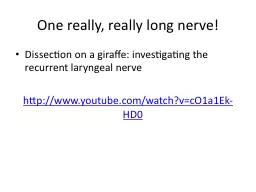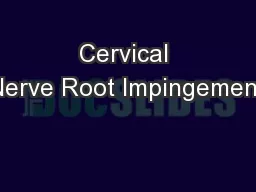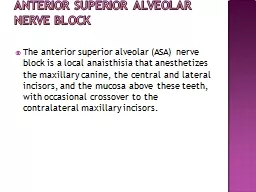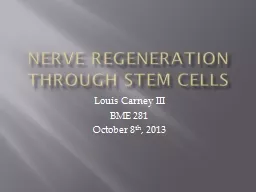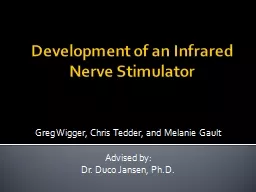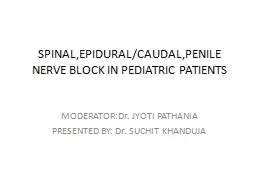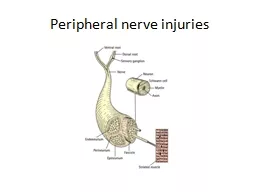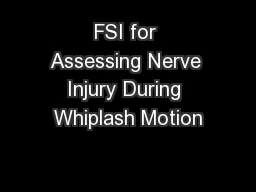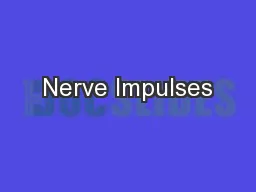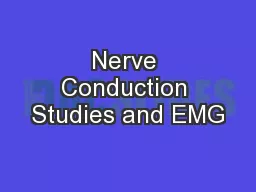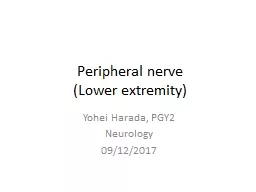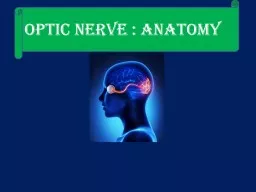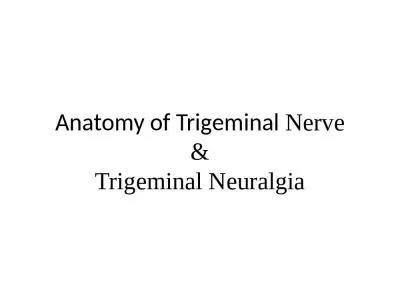PPT-One really, really long nerve!
Author : faustina-dinatale | Published Date : 2017-08-11
Dissection on a giraffe investigating the recurrent laryngeal nerve httpwwwyoutubecomwatchvcO1a1Ek HD0 Electrochemical Impulses Electrochemical Impulses Nerve impulses
Presentation Embed Code
Download Presentation
Download Presentation The PPT/PDF document "One really, really long nerve!" is the property of its rightful owner. Permission is granted to download and print the materials on this website for personal, non-commercial use only, and to display it on your personal computer provided you do not modify the materials and that you retain all copyright notices contained in the materials. By downloading content from our website, you accept the terms of this agreement.
One really, really long nerve!: Transcript
Dissection on a giraffe investigating the recurrent laryngeal nerve httpwwwyoutubecomwatchvcO1a1Ek HD0 Electrochemical Impulses Electrochemical Impulses Nerve impulses are electrochemical messages created by the movement of ions through the neuron cell membrane. Choose your colours animals and other symbols Glue the Charges to your shield Fill in your family name at the top Family name Charges Motto Colours . By: Michael Cox. Overview . . Anatomy of cervical spine and nerve roots. Reasons for impingement. Signs and symptoms associated with nerve root impingement. Acute treatment of injury. The anterior superior alveolar (ASA) nerve . block is a local . anaisthisia. that . anesthetizes the maxillary canine, the central and lateral incisors, and the mucosa above these teeth, with occasional crossover to the . Louis Carney III. BME 281. October 8. th. , 2013 . Nerve Damage . About 300,000 Americans a year suffer damage to peripheral and central nerves.. Nerves damaged in the PNS are sometimes able to regenerate on their own, however nerves in the CNS can not. . Greg . Wigger. , Chris . Tedder. , and Melanie Gault. Advised by:. Dr. . Duco. Jansen, Ph.D.. The Problem. Current prosthetic limbs cannot mimic the fine tuned movements of human limbs.. Creates a need for a reliable stimulation modality to gain better control over neural signals.. MODERATOR:Dr. . JYOTI PATHANIA. PRESENTED BY: Dr. SUCHIT KHANDUJA. INDICATIONS OF REGIONAL BLOCKADE. Analgesia:Both. . intraop. and . postop. Testicular . torsion or incarcerated hernia at immediate risk of rupture in . NERVE STRUCTURE AND FUNCTION. Peripheral . nerves are bundles of axons conducting. efferent (motor) impulses from cells in the anterior. horn of the spinal cord to the muscles, and afferent. (sensory) impulses from peripheral receptors via cells. Hua. -Dong Yao, . Håkan. . Nilsson. , . Mats . Svensson. . Department of Applied Mechanics,. Chalmers University of Technology, Sweden. 2013-11-13. List. Background. Methodology. Computational Settings. Sumit Bassi . M.D.. Sports Medicine Fellow Summa Health.. . Disclosures . Disclosure. :-. Financial. — No relevant financial relationship exists.. Nonfinancial. — . Member of American Medical Society of Sports Medicine.. Membrane Potential . = difference in electrical charges between inside & outside of neuron. http://highered.mheducation.com/sites/0072495855/student_view0/chapter14/animation__the_nerve_impulse.html. Elba y. Gerena-Maldonado, md. March 7. th. , 2017. Objectives. . Basics of an Electrodiagnostic Evaluation. Definitions. Neurophysiology. Limitations and Pitfalls. . Clinical Application for Common Cumulative Trauma Conditions. Yohei. Harada, PGY2. Neurology. 09/12/2017. Objectives. To understand the anatomy of peripheral nerve in lower extremity. To understand the function of each peripheral nerve in lower extremity. To understand the exam/test of peripheral nerve disorder in lower extremity. Introduction . Parts of optic nerve. Blood supply. Clinical significance. PRESENTATION LAYOUT. 3. rd. week of gestation: the first evidence of primitive eye formation occurs. Neural plate destined to form . &. Trigeminal Neuralgia. . Contents. . Introduction . . . Embryology of trigeminal nerve.. . Nuclei of trigeminal nerve.. . Course of trigeminal nerve. . . Trigeminal Ganglion. . .
Download Document
Here is the link to download the presentation.
"One really, really long nerve!"The content belongs to its owner. You may download and print it for personal use, without modification, and keep all copyright notices. By downloading, you agree to these terms.
Related Documents

